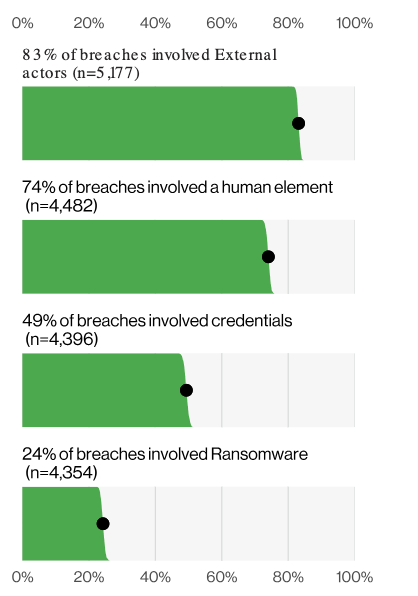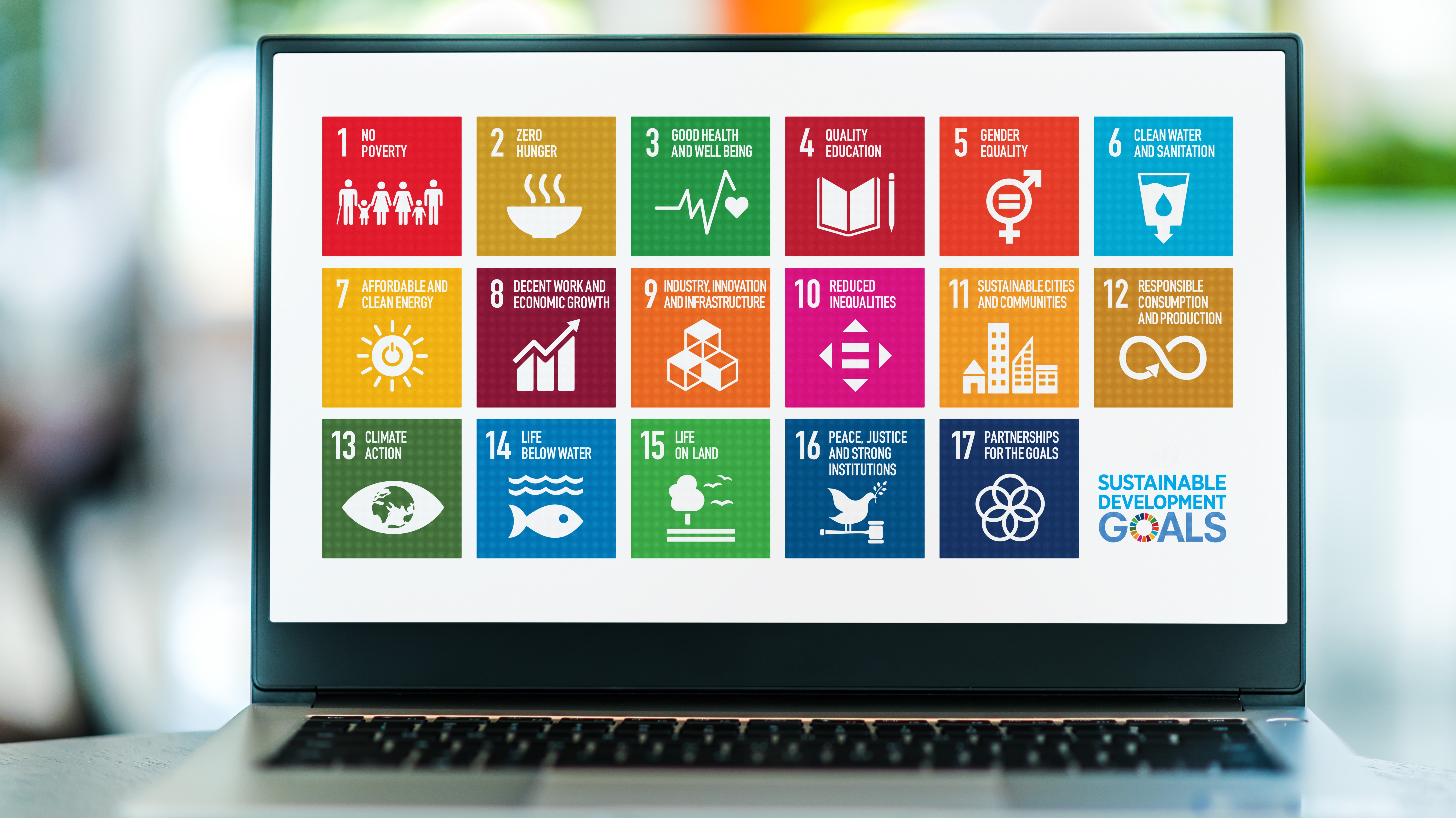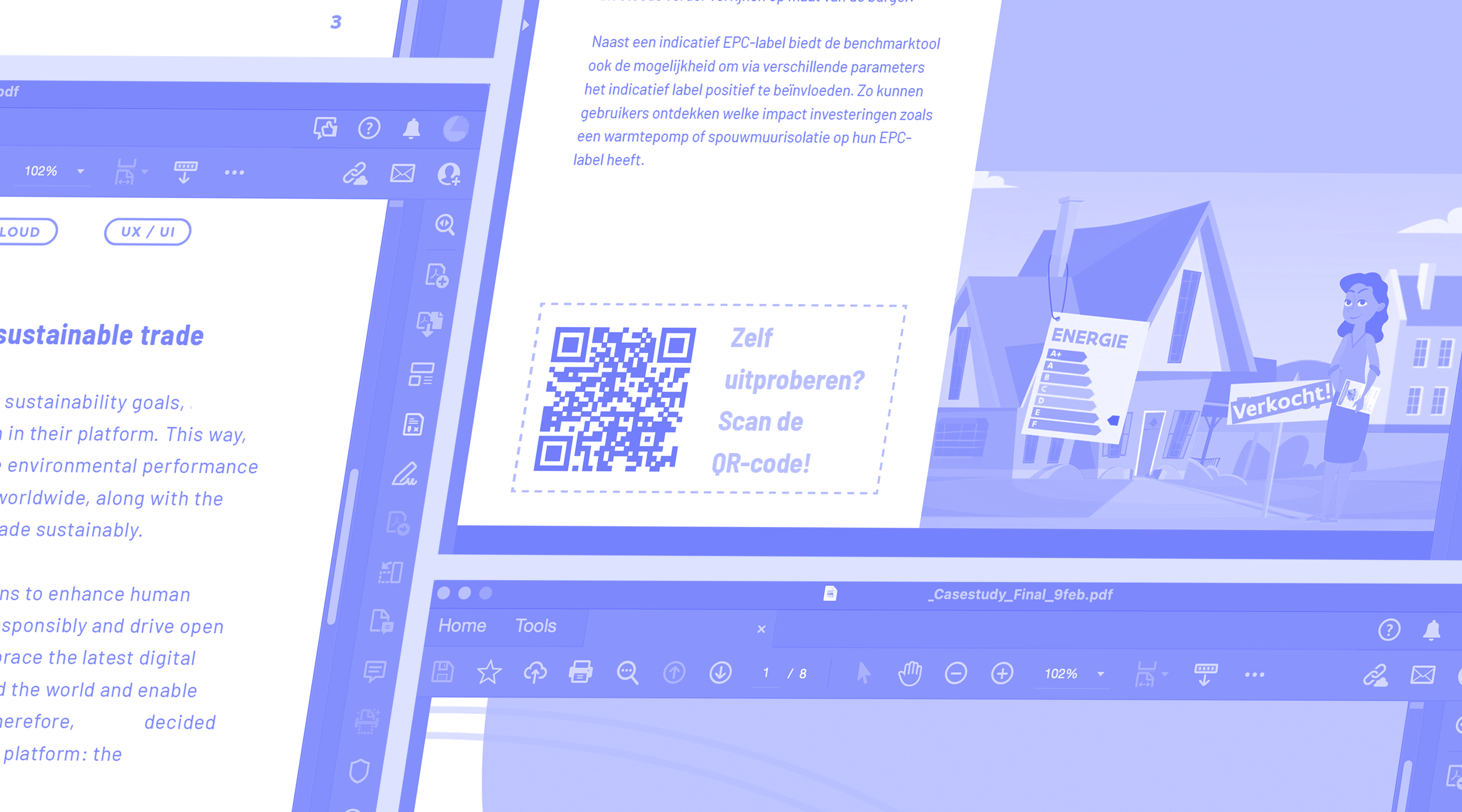
Intranet trends 2024: Innovation in the digital workplace
In 2024, the digital workplace prioritizes personalization through customized intranet experiences, focusing on security, sustainability, and mobile accessibility. AI-driven personalized content, gamification, and advanced data analytics enhance engagement and productivity. The intranet serves as a central hub for the entire employee lifecycle, from recruitment to retirement, streamlining processes and improving the overall workplace experience.
1. Security: Enhanced Security and Privacy Protection
As intranets play an increasingly central role in daily business operations, the security of these systems becomes critical. According to a study by Verizon in their "Verizon 2023 Data Breach Investigations Report," 74% of all breaches are caused by insider threats involving internal individuals. This can occur due to errors, misuse of privileges, or the use of stolen credentials. Good security includes several structured elements, where involving professionals is advisable. Here are some basic considerations:
- End-to-End Encryption: Sensitive information shared via the intranet must be fully encrypted, ensuring data is secure both during transmission (in transit) and when stored (at rest), preventing interception or unauthorized access.
- Regular audits and updates: Conducting security audits regularly helps identify and address vulnerabilities. Additionally, it's essential to keep the intranet software and associated systems up-to-date with the latest security patches.
- Privacy law compliance: Companies need to ensure that their intranet solutions comply with local and international privacy laws, including users' rights to access, modify, or delete their data.
- Monitoring & Risk detection: Real-time monitoring of network activities can assist in early detection of suspicious activities or anomalies that may indicate a security breach.

2. Sustainability: Sustainability & Social Responsibility
Intranets are playing an increasingly important role in integrating sustainability initiatives and socially responsible practices within organizations. Unfortunately, less than 25% of global companies express confidence in the effectiveness of their communication about their sustainability efforts, as shown in a study by Euromonitor International.
This trend focuses on using intranets as platforms for awareness, engagement, and action:
- Interactive content & awareness: By offering interactive content such as webinars, workshops, and e-learning modules, employees can learn more about sustainability issues and how they can contribute.
- Engagement & feedback: Intranets can provide platforms for employees to share ideas and feedback on sustainability initiatives, through surveys, forums, or suggestion boxes.
- Sustainable challenges / games: Gamification (we'll delve into this later) is also a significant trend emerging in intranets. Organizing contests and challenges related to sustainability can motivate the team to actively participate in company initiatives.

3. Personalized Experiences
The trend of personalized experiences in intranets is becoming more prominent and has significant implications for how organizations design and use their internal platforms. Below, we highlight some examples of this trend:
- Dynamic content feed:
- Customizable news feeds based on interests and departments.
- Personalized announcements and updates.
- User-specific content recommendations.
- Role-based dashboards:
- Custom dashboards depending on roles and responsibilities.
- Direct access to tools and information relevant to specific roles.
- Optimized workflows for different functional groups.
- Personalized learning paths:
- Training and development recommendations based on individual goals.
- Personalized learning paths with relevant courses and resources.
- Progress reports tailored to individual needs.
4. AI (Artificial Intelligence)
In the ever-evolving world of digital business communication, AI marks a new era. Intranets, once seen as static information hubs, are undergoing a transformation thanks to AI, making them not only more adaptive but also smarter and better tailored to users' individual needs. Leveraging this technology has the potential to profoundly change organizations in terms of communication, information management, and collaboration.
Below, we zoom in on some interesting ways you can make a positive impact on your intranet with AI:
- Automation of routine tasks: Automating repetitive administrative tasks allows team members to focus on more strategic and creative activities.
- Language usage and translation: AI that enables automatic translations and language processing quickly overcomes language barriers.
- Chatbots and virtual assistants: 24/7 support is at your fingertips with AI-driven chatbots that not only answer common questions but also provide personalized assistance.
- AI-powered search functionality: Finally, a search function that understands your users better than ever, saving valuable time and improving accuracy.

5. Mobile Accessibility in Intranet
With the increase in remote work and the use of mobile devices, mobile accessibility becomes a crucial aspect of effective intranet platforms. Intranets that seamlessly operate on smartphones and tablets are no longer a luxury but an essential requirement for organizations striving for flexibility, productivity, and user-centricity. Some examples include:
- Optimization for various screens: Intranets must be optimized for different mobile screens, from smartphones to tablets. This ensures a consistent and smooth user experience regardless of the device used.
- User-friendly navigation: Intuitive and user-friendly navigation on smartphones and tablets is essential. Users should have easy access to information and features without complicated actions.
- Push notifications: Push notifications provide immediate updates and communication to users on their mobile devices. This is useful for urgent information, announcements, and real-time collaboration, enhancing engagement.
6. Extended Reality (XR) for enhanced training and development
Extended Reality (XR), which includes Virtual Reality (VR), Augmented Reality (AR), and Mixed Reality (MR), is being increasingly integrated into intranets for training and development purposes. This trend is notable for:
- Immersive learning experiences: XR technologies provide employees with immersive and interactive training experiences. For example, using VR for safety training or AR for on-the-job guidance.
- Remote skill development: XR enables remote employees to participate in hands-on training sessions from anywhere, breaking down geographical barriers and providing equal learning opportunities.
- Engaging and effective training modules: XR-based training has been shown to increase retention rates and engagement by simulating real-world scenarios in a controlled, virtual environment.
7. Gamification in Intranets: A New Dimension of Interaction and Engagement
Gamification is no longer limited to the home environment; it has found its way into the business world. Integrating gamification elements into intranets is more than just a trend; it's an innovative approach to increase user engagement, boost productivity, and motivate employees. In a study by Spinify, companies reported a 48% increase in employee engagement when using gamification.
Below are some ways to integrate gamification into your intranet environment:
- Leaderboards:
- Competitive rankings based on performance.
- Visible recognition of top performers overall or per campaign/competition.
- Periodic challenges for a dynamic gaming element.
- Badges and achievements:
- Virtual badges for completed tasks and goals.
- Gamified achievements for personal and team successes.
- Integration with social features for sharing achievements.
- Incentive programs:
- Reward systems for achieving milestones.
- Opportunities for employees to select rewards.
- Continuous innovation of gamification elements for long-term engagement.
8. Analysis, Insights, and Data Visualization
All the new trends around gamification, engagement, sustainability, feedback, etc., make it more important than ever to collect data about your intranet and its users in a comprehensive and advanced way. Data-based insights allow organizations to make informed decisions and continually improve their digital workplace. An important component of this is data visualization to transform complex data into easily understandable visuals.
Below are some examples of interesting insights into your intranet:
- Measuring user engagement: Advanced analytics tools enable organizations to precisely see how actively employees are engaged with the intranet, helping identify popular features and areas in need of improvement.
- Evaluation of content effectiveness: Insights into the types of content that are most viewed and valued, enabling the development of more targeted content strategies.
- Understanding user behavior: In-depth analyses can reveal how employees navigate and search within the intranet, leading to optimizations for a more intuitive user experience.
9. Intranet as the Central Hub for the Digital Workplace
With the wide range of tools and options available, it's becoming easier to lose track. By integrating different digital tools and platforms from the workplace into one hub and overview, you ensure that team members can easily access various applications, documents, and communication tools.
- Efficient access to applications and documents: Employees can quickly and easily access the tools and files they need.
- Integrated communication tools for seamless collaboration: Various communication channels are integrated, allowing teams to collaborate effectively.
- The Intranet as the central hub for all digital work activities: The intranet serves as the central hub where employees can work, communicate, and share information.
10. Integration of the Employee Lifecycle
This trend involves the intranet serving as a comprehensive platform for the entire employee lifecycle, from attracting and onboarding new employees to their departure or retirement. This not only supports a better employee experience but also integrates processes and oversight into your HR policies.
- Internal mobility: Exploring internal job openings and discovering different career paths.
- Recruitment and onboarding: Streamlining application and onboarding processes, including submitting applications, digitally signing documents, and providing introductory materials.
- Training and development: Providing access to training materials and personal development plans.
The Digital Workplace in 2024?
When you think of the digital workplace in 2024, you think of an intranet where personalization, sustainability, integration, mobile, and engagement are key building blocks. These trends form the navigation map for your intranet experience.
If you have no idea where to start or simply want to discuss your ideas with someone experienced in this area, I'm here to assist you ;)


